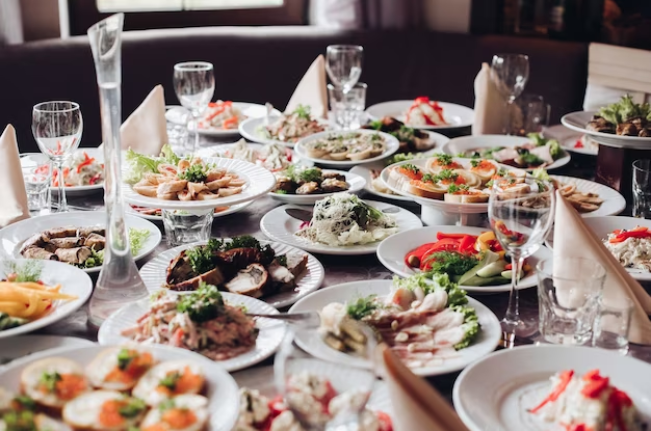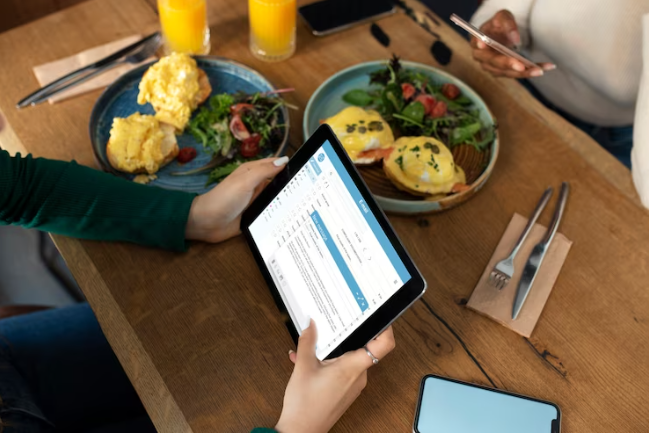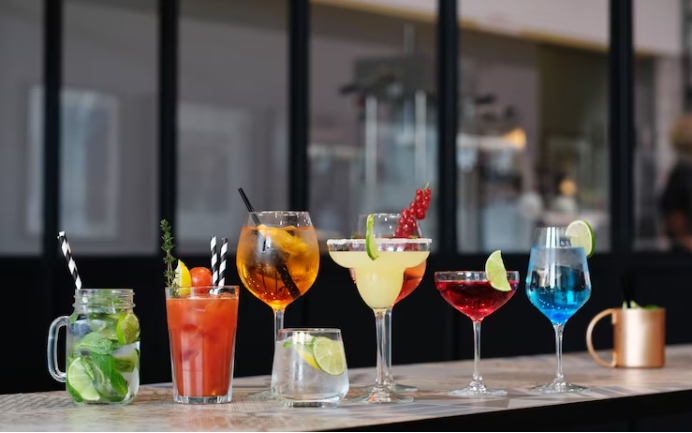Are you a restaurant owner looking to create a menu that will attract and satisfy your customers? You’ve come to the right place! A restaurant menu is more than just a list of dishes – it’s an opportunity to showcase your culinary creativity, cater to your customers’ needs, and ultimately, increase your profitability.
In this article, we’ll guide you through the process of creating an effective restaurant menu that will leave your customers coming back for more.
First and foremost, you need to understand your target audience. Who are your customers? What are their preferences and dietary restrictions? What kind of atmosphere are they looking for? Answering these questions will give you a better idea of what kind of cuisine and menu items you should offer.
From there, you can design a visually appealing menu that showcases your brand and entices customers to try your dishes. Additionally, we’ll cover pricing and profitability strategies to help you make the most out of your menu.
So, let’s get started on creating a menu that will leave a lasting impression on your customers.

Understanding Your Target Audience
You need to understand who your customers are and what they want, so you can create a menu that will make them crave your food and keep coming back for more. This means customizing options to cater to the preferences of your target audience.
For instance, if you’re targeting health-conscious individuals, you might want to include more salads, vegetarian options, and gluten-free dishes on your menu. On the other hand, if your target audience is mainly meat lovers, you might want to offer more steak, burger, and BBQ options.
Conducting market research is essential to understanding your target audience. You can use surveys, focus groups, and online reviews to gather information about your customers’ preferences, dietary restrictions, and budget. This will help you create a menu that appeals to your target audience, and also allows you to set the right prices for your dishes.
Remember, a menu that’s tailored to your customers’ needs will not only increase your sales but also improve customer satisfaction, leading to repeat business and positive word-of-mouth.
Choosing the Right Cuisine and Menu Items
Deciding on the perfect cuisine and menu options can make or break a diner’s experience and ultimately impact the success of your establishment.
It’s important to consider your target audience when choosing the right cuisine. If your target audience is primarily composed of health-conscious individuals, then offering a variety of vegetarian and gluten-free options would be a great way to cater to their needs.
Additionally, it’s important to keep up with the latest food trends and incorporate them into your menu. Menu specials and seasonal offerings are a great way to keep your menu fresh and exciting for customers.
When it comes to choosing menu items, it’s essential to strike a balance between classic dishes and unique options. Offering classic dishes like burgers and fries is important, but it’s also important to offer unique dishes that set your restaurant apart from others.
Furthermore, it’s important to ensure that your menu items are fresh and high-quality. Using locally sourced and organic ingredients can make a big difference in the taste and quality of your dishes.
By taking the time to carefully choose your cuisine and menu items, you can create an effective restaurant menu that will keep customers coming back for more.
Designing a Visually Appealing Menu
When looking at a menu, it’s important to have a visually appealing design that catches your eye and makes you excited to try the dishes. To achieve this, consider using typography tips to create a clear hierarchy of information.
This means using different font sizes, styles, and colors to make the most important information stand out, such as the name of the restaurant and the dish names. It’s also important to use easy-to-read fonts that match the restaurant’s aesthetic.
In addition to typography, color psychology can play a big role in designing a menu. Different colors can evoke different emotions and feelings, so choose colors that match the restaurant’s branding and the cuisine being served.
For example, red can stimulate appetite and excitement, while green can convey freshness and healthiness. However, be careful not to use too many colors, which can be overwhelming and confusing.
A well-designed, visually appealing menu can make a big difference in a customer’s dining experience and can even increase sales.
Catering to Different Dietary Needs and Preferences
Catering to a variety of dietary needs and preferences can greatly enhance the dining experience for all customers, allowing them to feel welcome and accommodated. Providing vegan options and gluten-free alternatives can make a significant difference in attracting and retaining customers.
Veganism has become increasingly popular, and it’s essential to offer plant-based dishes that are both delicious and nutritious. Gluten-free diets are also on the rise, and it’s crucial to have alternatives for those who need to avoid gluten due to celiac disease or gluten sensitivity.
When designing your menu, ensure that vegan and gluten-free options are clearly marked to avoid any confusion and make it easy for customers to identify them. Offering these options can also attract new customers who may have previously been hesitant to dine at your restaurant due to a lack of options that cater to their dietary needs.
By providing a range of options that cater to different dietary requirements, you can create a welcoming and inclusive environment that encourages customers to return and recommend your restaurant to others.
Pricing and Profitability Strategies
You can maximize your profits and keep your customers happy by strategically pricing your dishes and offering promotions. This is where menu engineering and menu psychology come into play.
Menu engineering involves analyzing which dishes are the most profitable and popular, and then adjusting the pricing and presentation accordingly. For example, placing high-profit items in the center of the menu or using dollar signs can subconsciously influence customers into choosing those items.
Menu psychology, on the other hand, focuses on the design and layout of the menu to create a positive dining experience and increase sales. Using descriptive language and appealing visuals can make dishes more enticing, while placing high-profit items in strategic locations can increase their visibility and likelihood of being ordered.
Additionally, offering promotions such as weekly specials or happy hour deals can encourage customers to visit more frequently and try new dishes, ultimately boosting profitability. By implementing these strategies, you can create a menu that not only satisfies your customers’ needs but also maximizes your profits.
Are you tired of your restaurant’s kitchen constantly being in chaos during the busiest hours of the day? Link
Frequently Asked Questions
How do I decide on the portion sizes for each dish on my menu?
When making portion size decisions for your menu, consider ingredient costs, your pricing strategies, and what your customers expect. Offering smaller portions at lower prices can also be a good option.
Should I include pictures of the food on my menu?
Considering food photography tips is essential when designing your menu. While visual menus can be tempting, customers trust textual descriptions more. Including a few succulent shots can be helpful, but be sure to balance it out with well-written descriptions.
How do I create a menu that is easy to read and navigate?
Make sure your font style is clear and easy to read. Use a simple menu layout with clear headings and categories. Group similar items together and consider using icons or symbols for quick identification.
How can I effectively promote my menu to attract new customers?
Attract new customers to your restaurant menu by promoting it through social media marketing and word of mouth advertising. Encourage satisfied customers to share their experience online and offer limited time promotions to entice new customers to try your menu.
Is it necessary to offer a separate menu for children or can they order from the regular menu?
Offering a separate menu for children is not necessary, but it’s helpful. Kids’ meal options can be added to the regular menu. Pricing for children should be reasonable, and portion control should be considered.
Conclusion
Congratulations! You’ve successfully created an effective restaurant menu that will entice your customers and keep them coming back for more.
By understanding your target audience, you’ve tailored your menu to their preferences and needs. You’ve carefully chosen the right cuisine and menu items that will appeal to their taste buds and satisfy their cravings.
Your visually appealing menu design is sure to catch the eye of your customers and leave a lasting impression. You’ve also taken into consideration different dietary needs and preferences, ensuring that everyone can enjoy a meal at your restaurant.
Lastly, your pricing and profitability strategies will help you maximize your profits while still offering great value to your customers. By following these steps, you’ve created a menu that not only looks good but also delivers on taste and value.
Your customers will appreciate the effort you’ve put in to create a menu that caters to their needs and preferences. So, go ahead and launch your new menu with confidence and watch as your restaurant continues to grow and thrive. Keep innovating and experimenting with new dishes, and you’ll be sure to keep your customers coming back for more!



